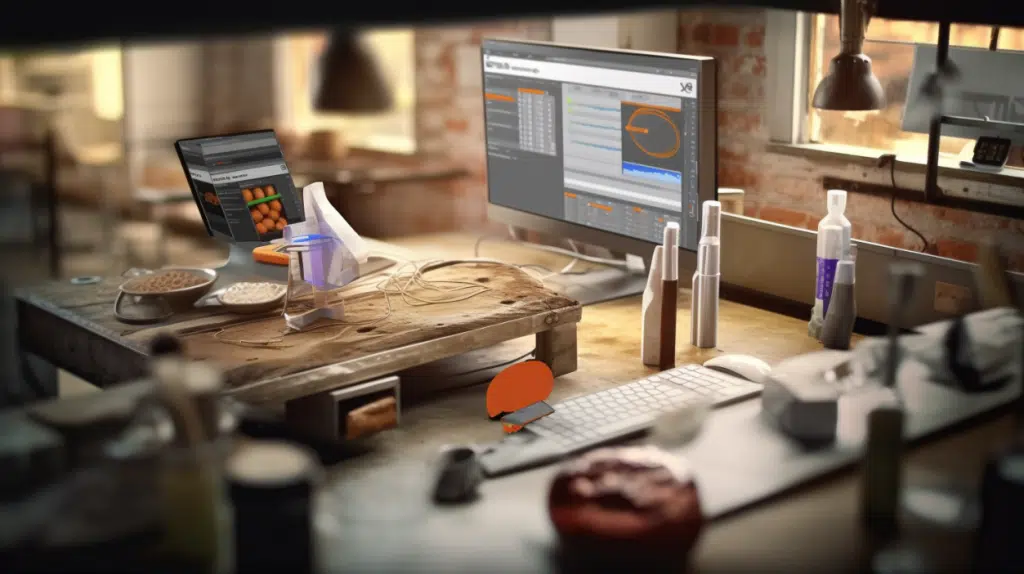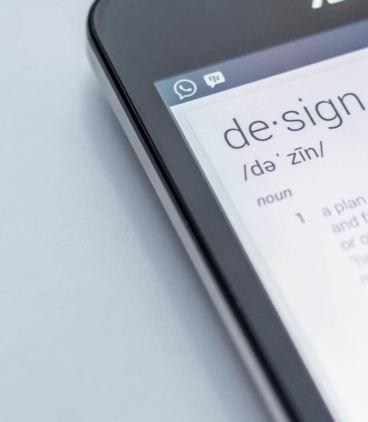Introduction
Welcome to “The Digital Design Doctrine,” a comprehensive guide brought to you by eCuras, a pioneer in the digital agency landscape. This handbook delves into every facet of the Digital Design process, elucidating on workflow, types of design, color palettes, typography, terminology, and more. Consider this your one-stop guide, providing in-depth training on the design process, right from inception to launch and beyond. Delve into the nuances of the Digital Design process and explore insights you never thought you needed.
Embarking on a new field like Digital Design can be overwhelming, given its unique set of jargon, underlying concepts, implicit rules, and industry “codes.” Much like other digital realms, this alien language can deter potential designers. However, fear not. Like learning any skill, it starts with taking that first step, despite possible intimidations and expectations.
Understanding Digital Design – The Fundamentals
At eCuras, we reject the isolative, competitive, and antisocial behavior that is common in the digital community. We debunk the myth that Digital Design is an exclusive domain, reserved for a select few. The charm of Digital Design lies in its continuous evolution with new programs, techniques, products, and software. It is an industry that thrives on change, making it essential for you to stay updated. By understanding and mastering some fundamentals, you open up a world of opportunities in a vibrant career path. Whether you’re new to design or an industry veteran, this guide offers an inclusive look at Digital Design principles and opportunities from a digital agency that lives and breathes design.

Why Share Our Secrets? Emulating Chefs
You may be wondering why a digital agency like eCuras would choose to share its secret sauce with the world. Why provide our peers and competitors with an inside look into our thinking and processes? These are valid questions with simple answers that differentiate us from other firms.
If you were to examine our diverse and industry-agnostic client base and inquire about how we consistently win new business, the answer might surprise you. Over 50% of the time, we have inherited a product – be it a website, video, marketing materials, or otherwise – that was so poorly constructed that it required substantial rework. These crucial marketing assets, whether intended for new B2B business or customer acquisition, often lacked the necessary structural logic. As a result, they needed to be almost entirely reconstructed. In addition to being strategic thinkers and digital designers, we have, by necessity, become digital fixers.
Why do we support such a high level of transparency and full disclosure of our business? The answer can be summed up in two words: “Emulate chefs.”
In their book, Rework, serial entrepreneurs Jason Fried and David Heinemeier Hansson explain their reasons for sharing their businesses’ details so publicly. They “emulate chefs.” These chefs, such as Emeril Lagasse, Bobby Flay, Julia Child, and Paula Deen, are household names not just because they’re skilled, but also because they openly share their knowledge. They publish their recipes in cookbooks and demonstrate their techniques on cooking shows.
Businesses often fall into the trap of thinking that keeping strategies secret gives them a competitive advantage. We believe this thinking is misguided. Sharing your unique approach can contribute to the broader community and make the world a better place. The chance of someone replicating your hard work and driving you out of business is minimal. Besides, the time it would take to do so is extensive. By sharing openly, we stand to learn more and elevate the entire field together.

The Art of Digital Storytelling
Much like content development, graphic design gives a face to the narrative. Digital Design goes beyond colors, fonts, images, and animations. It’s a blend of several disciplines to create a digital story. The following segments of this guide will shed light on the fundamentals of visual storytelling, sparking your interest in this dynamic industry.

Challenge Us – We Relish Competition
Being digital fixers has been a significant revenue source for us. But we thrive on challenges, creating dynamic and award-winning products in a fair, competitive environment. This document is our attempt to train and inspire current and future digital designers, encouraging them to challenge us, compelling us to elevate our game. We hope that our insights into Digital Design principles add value to your journey.

Unraveling the Digital Design Conundrum
At the core of this guide is our focus on ‘Digital Design’, a term that may seem complex, but essentially refers to all creative outputs tailored for digital platforms. Think websites, mobile app interfaces, animations, banner ad campaigns, and a multitude of digital products. This is a specialized guide for those engaged in or aspiring to delve into the UI/UX (user interface/user experience) process, as well as graphic designers who operate behind the scenes.
Inside, you’ll unearth a plethora of resources - everything from color and font selection, the art of using grids, to best practices for conducting a thorough QA (Quality Assurance) on a digital product. But that’s not all - we also delve into the myriad types of animation, guidelines for submitting designs for development, and a curated selection of resources designed to enhance your digital design acumen.

Constructing a Robust Base
Acknowledging the dynamic nature of our industry, with the consistent influx of new technologies and techniques, we’ve committed to periodically updating these articles. This ensures they stay relevant, reflect the current trends, and resonate with the ever-evolving ethos of the design world.
Our goal with this document is to lay down the fundamental guidelines that govern the architecture of a digital product, be it a website, mobile app, or an animated gif. In essence, this initial piece concentrates on the bedrock of the digital product design process.
As we proceed, we will expand upon this foundation by incorporating more advanced concepts and focusing on the finer details. The beauty of design is that intricate aspects are built upon these elementary principles, which stay constant irrespective of your project’s magnitude.
We aim to illuminate each phase of the design process, from conception and ideation through to execution. We’ll show you how we glean inspiration and reference from a myriad of external sources, combining it with our distinctive style and proficiency. Ultimately, we’ll exhibit how every design project, while beginning from the same foundational principles, blossoms into a product uniquely its own.

Insights at Your Behest
The consumption of this content is entirely dictated by your preferences and needs. If you gravitate towards a more traditional, holistic approach, feel free to scrutinize each component and get acquainted with every concept in its entirety. Alternatively, you may wish to leverage your foundational knowledge and plunge headfirst into the process - we encourage that too. Maybe there’s a particular aspect that’s sparked your curiosity? Go ahead and explore.
Our mission is to ensure this document caters to your requirements, irrespective of where you currently stand on the spectrum of expertise. If we’ve done our job correctly, there will be valuable insights here for everyone, from novices to seasoned professionals.

Where Does Your Project Stand in the Process?
Pause for a moment and browse through the document to identify what resonates with you the most. If you’re already engaged in a design role, we recommend going through the forthcoming sections listed here and mirroring them in your projects. This will enhance your understanding of the process and give you an idea of how we translate your vision into a fully functional digital product.
Now, without further delay, we delve into the core essentials of Digital Design. Up next on our agenda: terminology. Understanding the language is a vital step; without it, grasping the process will remain an elusive goal.









